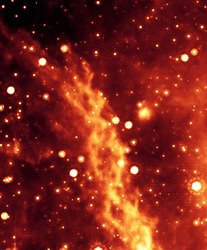This is the first in a four-part series of films dedicated to legendary filmmaker and friend, Stan Brakhage. It is also dedicated to a group of filmmakers with whom I shared orbit around the massive scope of Brakhage's work.
This has been the "audience favorite" of my works so far- at least, it has traveled around the world to all sorts of festivals and gotten great feedback (though the New York Times called it both one of the "most ambitious" films in its program as well as "relentlessly abstract." I'm not quite sure how to take the latter, but every artist knows that "ambitious" feels like a blow-off. I digress...)
As such, I am a bit reluctant to post it online, where it will be seen at 1/100th of its intended size, with resampled sound and dropped frames. Still, I'm reaching out into the volgosphere! It will be traveling around the country soon, so perhaps it might inspire a few souls to go see it when it comes to town (more details as they become available).
It is a 16mm sound film that imagines the icy hatched-marked world of Jupiter's moon, Europa. The soundtrack consists of recordings from several probes that visited the moon (specifically, the "sounds" are coming from the atmosphere of Jupiter), as well as whale songs- an imagining of the possible life beneath the icy surface. The imagery combines hand-painted liquid crystals and Super-8mm footage from a local aquarium (hooray for (now extinct) Kodachrome).






